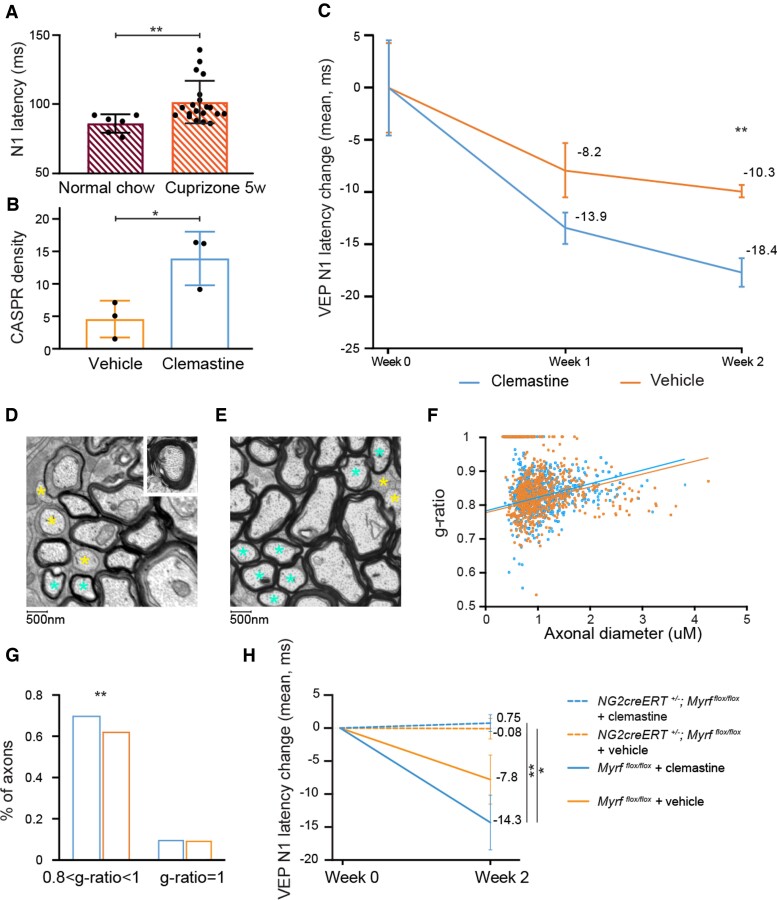Figure 2.
Effect of clemastine on remyelination after toxic demyelination by cuprizone including a model with no capacity for forming new myelin. (A) Cuprizone diet provokes N1 latency delay. The graph shows VEP latency in healthy subjects (average N1 = 86 ms, SD 6.7) and mice after 5 weeks of cuprizone diet (average N1 = 101.6 ms, SD 15), P = 0.002. (B) CASPR staining of ONs (5 weeks of cuprizone diet, followed by 2 weeks of treatment with clemastine/vehicle) shows a higher density (count × 103/mm2) of paranodes in clemastine-treated mice. (C) Clemastine enhances the degree and pace of latency recovery (P = 0.007 at 14 days). (D and E) Examples of EM micrographs of mouse ONs after 5 weeks of cuprizone followed by 2 weeks with vehicle (D) or clemastine (E). (F) G-ratios of ON axons from the same experiment (five mice analysed per group). (G) Quantification of unmyelinated (g-ratio = 1) and remyelinating (0.8 < g-ratio < 1) axons. (H) Absence of improvement in delay of N1 latency after discontinuing cuprizone diet in NG2creERT+/−Myrfflox/flox mice, even if treated with a remyelinating compound (clemastine). Clemastine enhances the degree and pace of latency recovery in wild-type [mean (SEM) −14.3 ms (4.1)] mice but not in NG2creERT+/−Myrfflox/flox mice [mean (SEM) 0.8 ms (1.3)]. Error bars represent SEM for latency change.

